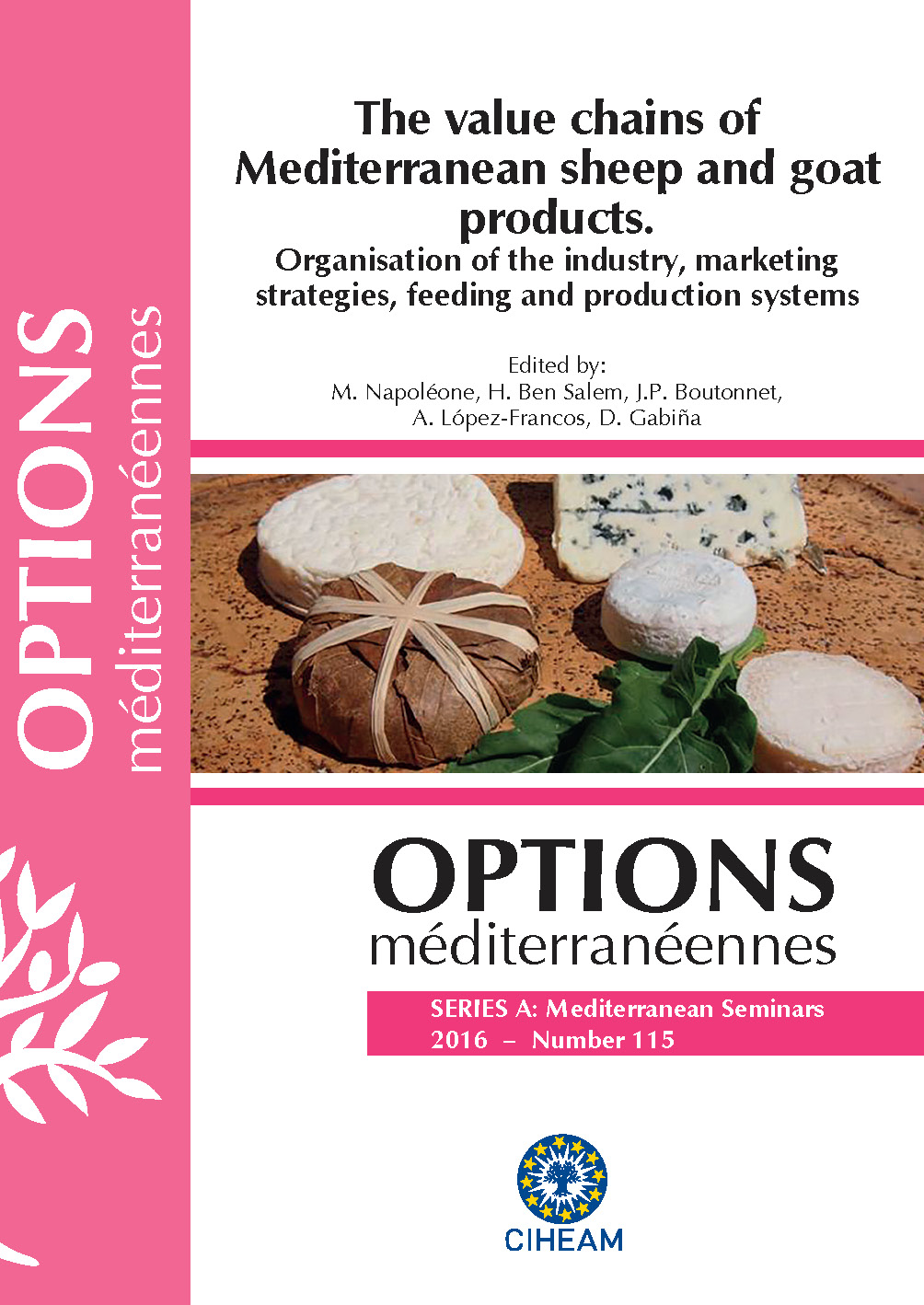| Article précédent | p. 627-631 | Article suivant |
Effect of increased fresh-cut pasture intake on dairy goat milk production: Case study
The New Zealand dairy goat industry is a world leader in the production of goat milk-based paediatric formulae. Increased milk production per goat is necessary to support the growing demand for goat milk products. One way of achieving this is by optimisation of the cut-and-carry feed supply system. The effect of feeding system on milk production was investigated on two farms: low input (LI) and higher input (HI), from August 2013 to May 2014. Fresh pasture contributed 51% and 34% of dietary energy offered on LI and HI farms, respectively, whereas grain supplements contributed 28% and 39% of dietary energy on LI and HI farms. There were differences between the LI and HI farms in key measures of forage supply: dry matter (DM) intake (2.8 vs 2.4 kg DM/hd/day), energy intake (35 vs 29 MJME/hd/day), and protein intake (513 vs 320 g/hd/day) for LI and HI respectively. Goats on LI farm had greater average lactation milk solids (+11 kg MS/hd/year) and milk protein (+3 kg/hd/year) yields than goats on HI farm (104 kg MS/hd/year and 28 kg milk protein/hd/year). The greater production per goat on the LI farm was driven by higher intakes of DM, energy and protein, underpinned by the large proportion of fresh pasture in the diet. The higher level of supplement use on the HI farm did not result in greater production because of the lower quality of the diet overall.
La filière caprine en Nouvelle Zélande est un leader mondial dans la production de lait infantile à base de lait de chèvre. Une augmentation de la production laitière par chèvre est essentielle pour faire face à la demande croissante pour ce produit. L’effet du système alimentaire sur la production laitière a été étudié dans deux élevages : ‘niveau d’intrants faible’ (LI) et ‘niveau d’intrants élevés’ (HI) d’Aout 2013 à Mai 2014. L’herbe fauchée (affouragement en vert) constituait 51% et 34% de l’apport énergétique total par la ration (en moyenne par chèvre) en élevage LI et HI, respectivement. Les concentrés constituaient 28% et 39% de l’apport énergétique total en élevage LI et HI. En moyenne pour la saison, nous avons observé des différences entre élevages en termes d’ingestion de matière sèche (MS ; 2,8 vs 2,4 kg MS/j), ingestion d’énergie (35 vs 29 MJ ME/j), et de niveau d’ingestion de protéines brutes (513 vs 320 g/j) pour LI and HI respectivement. L’élevage LI a atteint des niveaux de production de matières utiles (MU) et protéines du lait par chèvre plus élevés (+11 kg MU/an et +3 kg protéines/an) que l’élevage HI (104 kg MU/an et 28 kg protéines/an). Le meilleur niveau de production en élevage LI s’explique par des niveaux moyens d’ingestion de MS, énergie et protéines brutes plus élevés, soutenus par une large proportion d’herbe fauchée dans la ration.
- [ Afficher ]
- [ Télécharger ]
- [ Exporter la citation ]
Vous pouvez télécharger la citation au format :
- [ Imprimer ]
-
Mots-clés
CHEVRE, INGESTIONCiter cet article
Ganche E., Hutchinson K., Mapp N., King W. Effect of increased fresh-cut pasture intake on dairy goat milk production: Case study. In : Napoléone M. (ed.), Ben Salem H. (ed.), Boutonnet J.P. (ed.), López-Francos A. (ed.), Gabiña D. (ed.). The value chains of Mediterranean sheep and goat products. Organisation of the industry, marketing strategies, feeding and production systems. Zaragoza : CIHEAM, 2016. p. 627-631. (Options Méditerranéennes : Série A. Séminaires Méditerranéens; n. 115). Joint Seminar of the Subnetworks on Nutrition and on Production Systems of the FAO-CIHEAM Network for Research and Development in Sheep and Goats, 2015/06/16-18, Montpellier (France) . http://om.ciheam.org/om/pdf/a115/00007343.pdf



